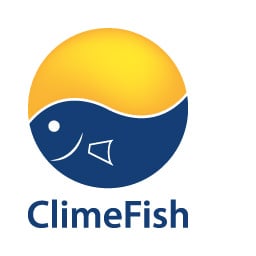FAO

What is FAO?
FAO a specialized agency of the United Nations created in 1945 that has the overall objective to achieve food security. It is an intergovernmental organization counting over 190 Member States and currently working in over 130 countries. FAO headquarters are in Rome, Italy, but there are a number of offices throughout the World to insure a presence on all continents and provide direct support to countries. The programme of work is built around five main strategic objectives: 1) help eliminate hunger, food insecurity and malnutrition; 2) make agriculture, forestry and fisheries more productive and sustainable; 3) reduce rural poverty; 4) enable inclusive and efficient agricultural and food systems; 5) increase the resilience of livelihoods to threats and crises.
Why FAO is interested in ClimeFish?
The fisheries and aquaculture Department of FAO leads efforts to promote and support implementation of the Code of Conduct for Responsible Fisheries and its related instruments, in addition to providing scientific advice, strategic planning, and training materials. Moreover, it serves as a neutral forum in bringing together relevant actors to discuss issues related to international cooperation and multistakeholder approaches to fisheries and aquaculture management. The Department’s work, as FAO’s, includes both normative activities that set international standards and best practices, and field projects that support countries and regions.
Climate change has become high in the agenda of FAO and its Fisheries and Aquaculture Department, in response to the international concern about climate change impacts and increased vulnerabilities of fishing and aquaculture-dependent communities in the World. As a result, FAO compiled global knowledge on climate change implications for the fisheries and aquaculture sector, as well as tools and instruments to support climate change adaptation and mitigation. Field projects were also developed and implemented on all continents to support adaptation and pull out lessons learned to provide overall guidance and allow for replication and dissemination of best practices.
FAO joined ClimeFish as an opportunity to be involved or closely monitor and learn from the development of guidance on climate change adaptation, from the generation of scientific knowledge trough biological oceanography modelling down to the dissemination of capacity building tools and material intended for policy makers and industry. ClimeFish is also an opportunity for FAO to provide technical advice for the development these tools, and make sure they are in line with international instruments such as the Ecosystem Approach to Fisheries and Aquaculture that were adopted by the EU as the official frameworks for the management of this sector. The experience of FAO in stakeholders’ consultation and engagement was also considered as an asset that the project could benefit from.
What is FAO’s contribution to the project?
FAO contributes to WP4, WP5, WP6 and WP7. It provides support to the risk and vulnerability assessment of the various case studies, by contributing to the refining of the methodology. It contributes to the development of the adaptation guidance by sharing lessons learned and ensuring there is an explicit link with fisheries and aquaculture management. It supports the stakeholders’ engagement and consultation activities by sharing lessons learned during a long-lasting history of consultations with the industry and various partners. FAO is specifically in charge of supporting the development of training material that will be delivered at the end of the project and it is expected to organize and host the final conference planned to be held in February 2020 to showcase both ClimeFish and CERES projects’results.

